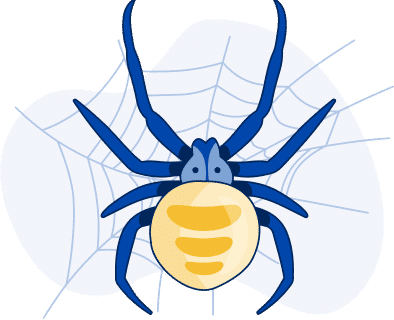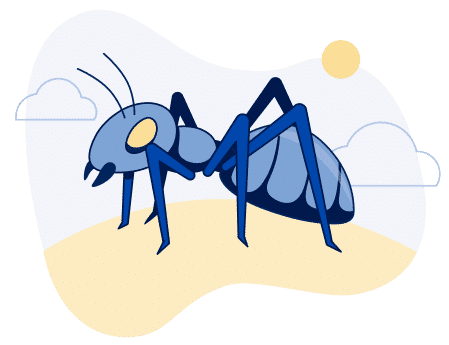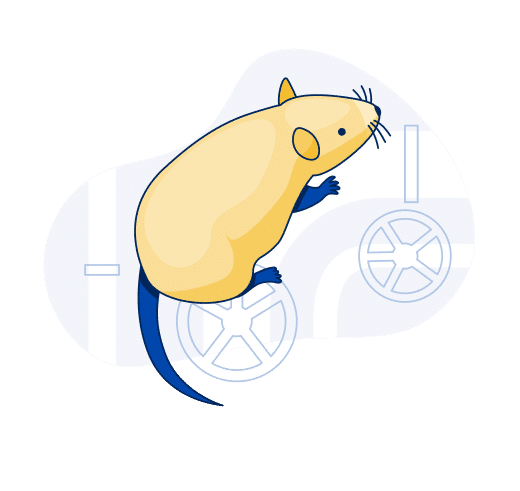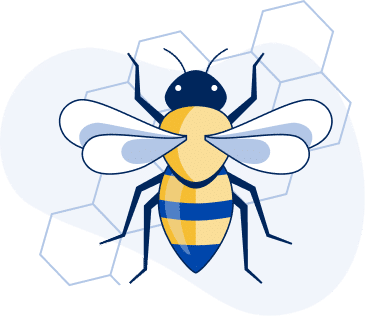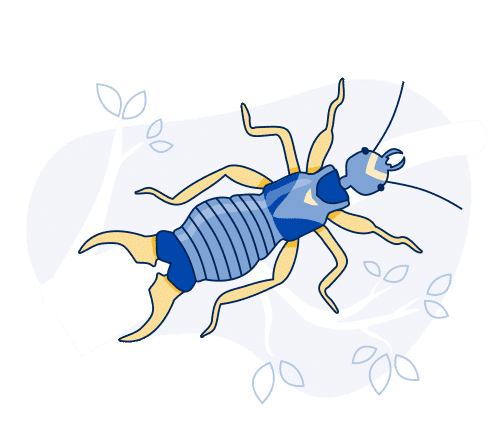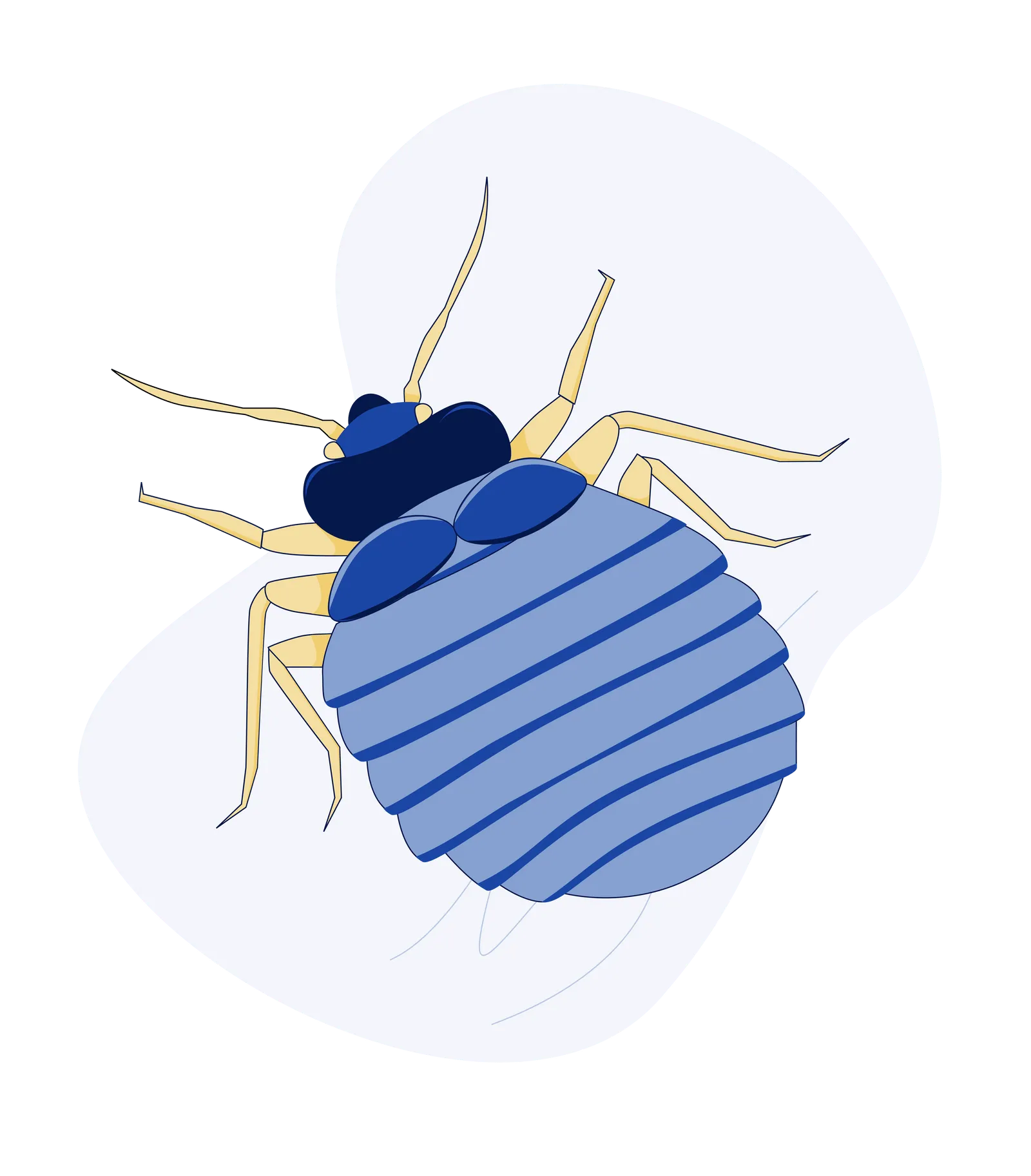The Top 7 Scariest Spiders Found in Provo, Utah

Did you know that Utah is home to many spider species? Believe it or not, approximately 621 different types of spiders reside in Utah. And here’s a fact that might give you the creeps – almost all these spiders carry venom!
Among this vast array of species, seven specific types are particularly common and pose a significant threat. These include the Black Widow, Brown Recluse / Desert Recluse, Hobo Spider, Wolf Spider, Yellow Sac, Camel, and the Huntsman Spider.
Black Widow Spider
Using natural pest control methods is an eco-friendly and safer option for pest management. Chemical pesticides can a
Black widow spiders, known as Latrodectus, are a group of spiders known for their dark color and red hourglass pattern. They are found in many parts of the world, including North America, where there are three main types: the southern black widow, the northern black widow, and the western black widow.
These spiders are medium-sized, with females being larger than males. Females can grow up to 1.5 inches long, including their legs. They are shiny black and have a red hourglass-shaped mark on their belly. Males are smaller and usually dark brown with different colors of stripes or dots.
Black widow spiders are not often aggressive. They usually bite people out of self-defense. Their bite can cause muscle pain, nausea, and difficulty breathing. However, most people who are bitten do not suffer serious damage. The bite can be fatal to very small children and the elderly.
These spiders are also known for their unique behavior. They are mostly active at night and prefer dark corners or crevices. They build large webs where they hang upside-down, waiting for prey to get stuck. Their diet mainly consists of insects such as flies, mosquitoes, grasshoppers, and beetles.
Black widow spiders are found in various habitats, such as brush piles, woodpiles, and fields. They are also commonly found in urban habitats or agricultural areas. Indoors prefer cluttered areas such as garages, crawl spaces, and basements.
In Utah, black widow spiders, specifically the Western Black Widow (Latrodectus hesperus), have gained a fearsome reputation due to several factors. Their distinctive appearance, potent venom, and unique behavior have contributed to their scary reputation in the state. Despite their fearsome reputation, they play a crucial role in the ecosystem and are an interesting subject of study.cause harm to beneficial insects like bees and butterflies, which are essential for pollination. Additionally, pesticide exposure can cause respiratory problems, skin irritation, and other health issues in humans. Using natural pest control methods not only protects the environment but also keeps you and your family safe from harmful chemicals.
Brown Recluse
The Brown Recluse Spider, scientifically known as Loxosceles reclusa, is a well-known spider species native to the United States. It’s often recognized by its violin-shaped markings and six eyes arranged in pairs. The spider’s body is usually no more than 3/8-inch (1 cm) in length, with a uniformly colored abdomen and legs.
These spiders are nocturnal hunters, preferring to stay close to the ground. They don’t use their webs to catch insects but actively hunt for their prey. They’re generally found in idle or vacant structures, in attics, basements, wall voids, and sometimes in discarded clothing.
The Brown Recluse Spider prefers living in dark, undisturbed sites, both indoors and outdoors. They’re native to a region comprising Kansas, Oklahoma, Texas, Louisiana, Arkansas, Missouri, Mississippi, Alabama, and parts of Georgia, Tennessee, Kentucky, Ohio, Indiana, Illinois, Iowa, and Nebraska. However, they’re not typically found west of the Rocky Mountains.
The bite of a Brown Recluse Spider is known for its evil nature. The venom contains a rare toxin that can destroy skin tissue. While about 90% of brown recluse bites are not medically significant, they can cause necrotic (rotting) skin lesions and lead to serious reactions or even death in some people, especially children. However, mild bites resolve with proper care within days to weeks, while more severe cases can take months to heal.
Hobo Spiders
Hobo Spiders, prevalent in Utah and the Pacific Northwestern United States, are notorious for their elusive nature, making them challenging to identify. They exhibit unique features such as a chevron or V-shaped pattern on their abdomen, with the V’s pointing towards their head. Additionally, they have a light stripe running down the center of their chest. Their color ranges from light tan to dark brown.
Hobo Spiders were first sighted in Utah in the 1990s. Known for their swift movements, they can easily evade predators. However, they are not adept climbers and usually construct their funnel-shaped webs near the ground. They inhabit small crevices or holes where they strategically place their webs.
The bite of a Hobo Spider can lead to necrosis, a condition where the skin around the bite starts to die. Despite being classified as a dangerous spider, severe bites from Hobo Spiders are rare. This is partly due to their incredible speed, which often leaves victims unable to see or catch the spider post-bite.
The fear of Hobo Spiders in Utah can be attributed to their venomous bites and elusive nature. Their ability to inhabit human dwellings and the potential health risks associated with their bites have contributed to their reputation as one of the scary spiders in Utah. However, it’s important to note that severe reactions are rare, and most bites can be effectively managed with proper care.
Wolf Spider
Neem oil is another effective natural pest control method that is derived from the neem tree. It works by disrupting the feeding and reproductive patterns of pests. Mix one tablespa
Wolf Spiders, particularly prevalent in Utah and across the United States, are a source of fear for many due to their large size, with some species growing up to 2 inches long. Despite the fear they instill, their bites are not always harmful. Wolf Spiders are currently ranked among the most dangerous spiders in Utah and globally. Their hunting behavior, similar to that of wolves, earned them their name. They are skilled hunters, stalking and ambushing their prey with a swift pounce.
In Utah, Wolf Spiders are commonly found on the ground in open spaces such as farmland or grassy areas. They are characterized by their orange-brown to gray, sometimes black, hairy bodies. Their bodies are adorned with splotchy stripes, aiding in their camouflage from predators. A unique sight is that of mother Wolf Spiders carrying their offspring on their backs until the young ones are strong enough to venture out independently.
While the bite of a Wolf Spider is not lethal, it can cause significant pain. Some individuals may also experience allergic reactions to their bites. Therefore, seeking medical attention if bitten by a Wolf Spider is always advisable.
The fear of Wolf Spiders in Utah can be attributed to their large size, hunting behavior, and the potential pain and allergic reactions associated with their bites. Despite this, it’s important to remember that they play a crucial role in controlling the population of other pests in our environment.
oon of neem oil with one quart of water and spray it on your plants to deter and kill pests. Neem oil is effective against a wide range of pests, including aphids, whiteflies, and spider mites. It is safe for use on most plants, but be sure to test it on a small area first to avoid any potential damage.
Yellow Sac
The Yellow Sac Spider, a common yet often overlooked species in Utah, is known for its distinctive characteristics. With an average length of 6mm, roughly the size of a nickel, it is easily identified by its bright yellow, opaque-like coloration. The spider lacks distinctive markings except for a brownish tint around their eyes and mouth. The first two legs are noticeably longer than the others, and male Yellow Sac Spiders are generally smaller than their female counterparts.
Yellow Sac Spiders are nocturnal, making them more visible after sunset. During the day, they spin a flat silk sac and rest until the next evening. These spiders have a knack for finding their way into homes, often seen along baseboards, corners of walls, and ceilings.
The bite of a Yellow Sac Spider can cause significant pain and discomfort. A study published in 2006 titled “Verified bites by Yellow Sac spiders (genus Cheiracanthium) in the United States and Australia: where is the necrosis?” examined 20 cases of Yellow Sac Spider bites. It found that all victims experienced pain or discomfort, with the median pain duration lasting about 1 hour and 45 minutes. Some individuals reported headaches, while others experienced nausea and vomiting. These findings underscore the Yellow Sac Spider’s status as one of the most venomous spiders in Utah.
If you suspect a Yellow Sac Spider bite, you can expect symptoms such as pain, redness, burning, swelling, and itching. Medical professionals recommend applying hydrogen peroxide to the bite and surrounding area, followed by ice. If symptoms such as nausea, vomiting, or persistent headaches occur, immediate medical attention is advised.
The fear of Yellow Sac Spiders in Utah can be attributed to their venomous bites and tendency to inhabit human dwellings. Despite their small size, their painful bites and the potential health risks associated with them have contributed to their reputation as one of the scary spiders in Utah.
Camel Spider
The Camel spider, often characterized as large, hairy, and terrifying, can grow up to 6 inches long and weigh around 2 ounces. These spiders have evolved to survive in deserts, making Utah’s dry environment an ideal habitat. A unique feature of these spiders is their respiratory system, which enables them to run up to 10 miles per hour.
Camel spiders in Utah are typically found in hot, dry areas, often hiding under rocks or similar structures to escape the sun. Some species of Camel spiders can hiss, a defense mechanism to ward off predators. Despite their intimidating size, their bite is not deadly.
The fear associated with the Camel spider in Utah can be attributed to its large size, unique characteristics, and the potential severity of its bite. While a Camel spider’s bite is not venomous, it can result in a severe wound. If you are bitten by a Camel spider and experience symptoms such as intense pain, swelling, or bleeding, it is advised to seek immediate medical attention. There have been cases where Camel spider bites have led to necrotizing skin infections.
Huntsman Spider
The Huntsman spider, a member of the giant crab spider species, is typically light tan to brown. It has darker areas around its eyes and the tips of its legs. The Huntsman spider bears a slight resemblance to a crab, with its front legs resembling pinchers.
Huntsman spiders are predominantly found in Southern Utah. They are common in warmer states across the U.S. They are usually found in arid areas with shrubbery and rocks or on the ground. An interesting fact about the Huntsman spider is its exceptional climbing ability, which includes the capability to crawl across ceilings. Despite their large size, Huntsman spiders generally pose no threat to humans.
If you suspect that a Huntsman spider has bitten you, cleaning the affected area with hydrogen peroxide and applying ice and compression is recommended. If you experience severe side effects such as vomiting, excessive bleeding, headaches, or similar symptoms, it is crucial to seek medical attention immediately.

